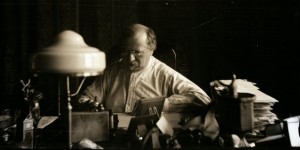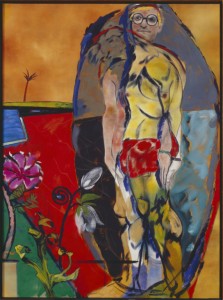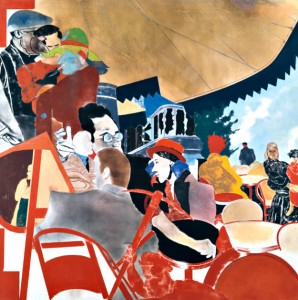Constantin Brunner (1862–1937) is one of the philosophical authors whose work remains to be discovered.  On the occasion of his 150th birthday and the 75th anniversary of his death, the Jewish Museum hosted a conference that traced the whole range of his thought and personality.
On the occasion of his 150th birthday and the 75th anniversary of his death, the Jewish Museum hosted a conference that traced the whole range of his thought and personality.
The German Jewish philosopher, pen-named Brunner while originally named Leo Wertheimer, was born in Altona outside of Hamburg. He studied religion, philosophy, and history in Cologne, Berlin, and Freiburg, and subsequently lived and worked in Hamburg as an editor and writer, until devoting himself to the development of his own philosophical system, starting in 1895 in Berlin and then from 1913 in Potsdam. → continue reading

R.B. Kitaj, The Neo Cubist, 1976-1987 © R.B. Kitaj Estate, Astrup Fearnley Collection, Oslo, Norway
On the 19th of October, just past 8 pm, I received the message “David is breaking away from his installation in Köln and will arrive at the Jewish Museum on Sunday 21st. between 11. – 11.30 am.”
Some time before, I had contacted the gallerist Peter Goulds to ask whether David Hockney might be interested in coming to Berlin to visit the R.B. Kitaj exhibition; I knew Hockney would be in Cologne to open his own exhibit “A Bigger Picture” at the Museum Ludwig. Though it seemed unlikely at first, Hockney was able to come. He brought his partner, his studio manager, and a chauffer, and appeared wearing an elegant grey double-breasted suit, a black Hawaii shirt with fantastic plants on it and a checked flat cap.
→ continue reading

R.B. Kitaj, The Autumn of Central Paris (After Walter Benjamin), 1972–1973 © R.B. Kitaj Estate
Kitaj’s canvasses are riddled with references to artists and scholars, from Erasmus to Herman Melville, from Fra Angelico to Rosa Luxemburg. From a formal perspective, Kitaj’s obsessive use of citations reflects on the visual impact of images and names, signs and references. Conceptually, citations can involve finding artistic forefathers, and building an intellectual community. This is what I find particularly moving about Kitaj’s work: the artist peoples his paintings, like dream worlds, with “adopted ancestors,” who interact with one-another. → continue reading
 On the occasion of his 150th birthday and the 75th anniversary of his death, the Jewish Museum hosted a conference that traced the whole range of his thought and personality.
On the occasion of his 150th birthday and the 75th anniversary of his death, the Jewish Museum hosted a conference that traced the whole range of his thought and personality.
